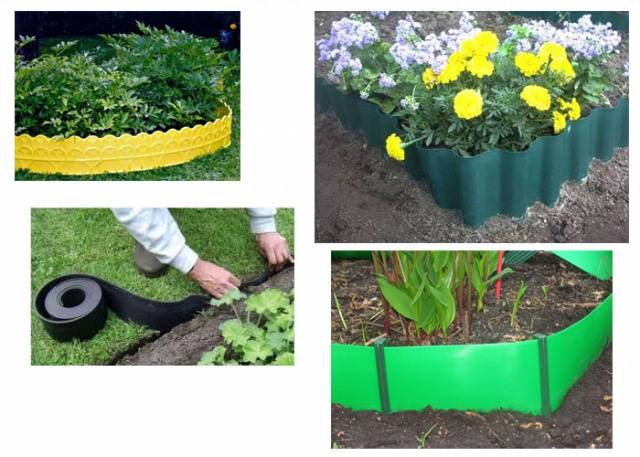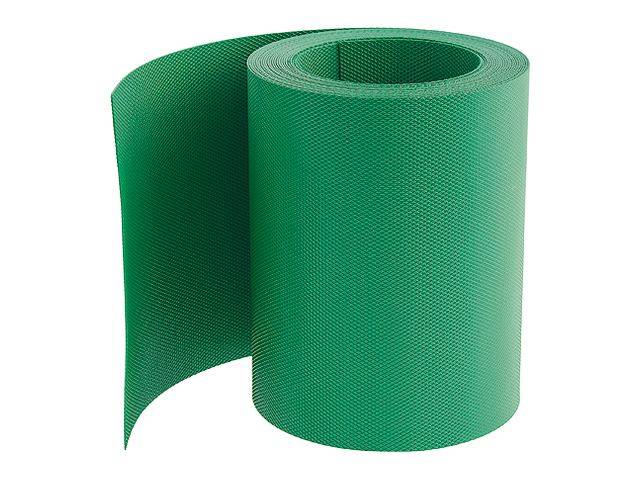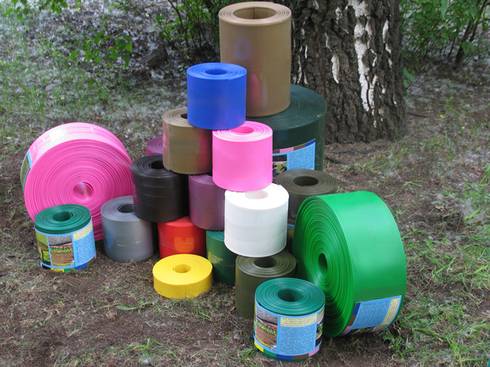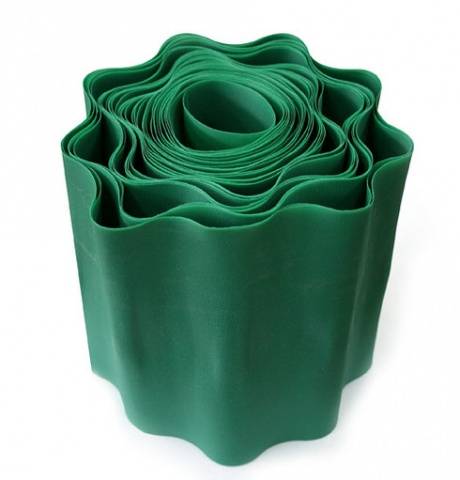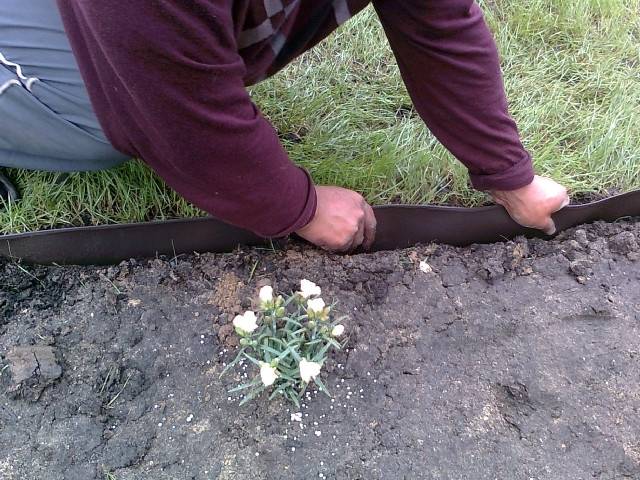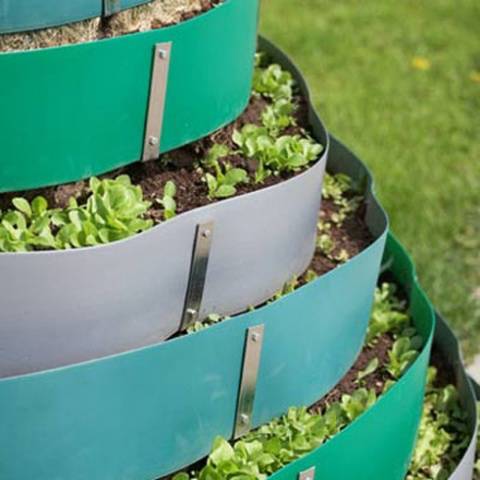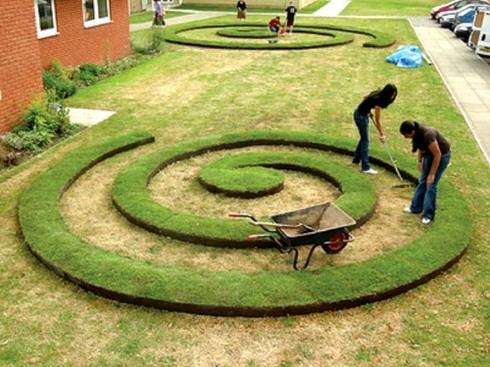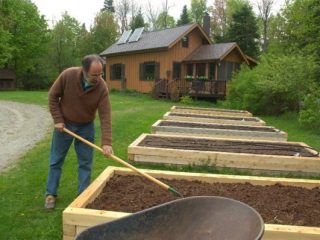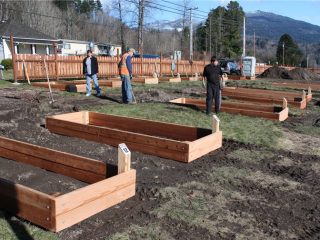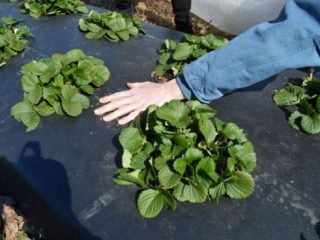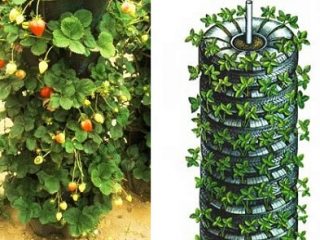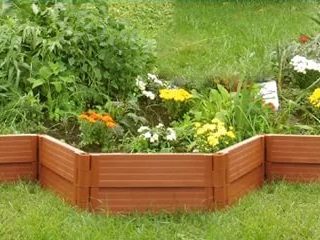Content
It is not difficult to build a garden bed fencing, however, it will still require some effort, most of all aimed at processing the material. Whether it is a board, slate or corrugated sheet, they will have to be sawed, then fastened to form a durable box. What to do if you urgently need to install decorative fencing? Border tape for beds made of plastic or rubber will come to the rescue.
What benefits will the owner of the site receive from using border tape?
The name “border tape” already speaks about the purpose of this product. The material was created to replace traditional concrete curbs. After all, it is more convenient to fence a lawn or flowerbed with tape than to lay concrete fences. In addition to decorative use, the product is popular among gardeners for arranging beds.
The benefits of using a flexible border are obvious:
- A decorative border allows you to divide a large area into zones. Let’s say that the installed tape will clearly highlight the boundaries of a lawn, a small pond in the yard, a flower bed, an area around a tree, etc.
- Different plants can grow in each of the divided zones. The gardener does not have to worry about mixing them during the growth period.
- The border prevents soil from being washed away from the garden bed.During watering, the water remains under the plants and does not flow onto the path near the garden bed.
- An area isolated with tape 100% guarantees that the applied fertilizers will reach only the plants growing on it, and not all weeds.
So, why should you give preference to curb tape if any material can cope with all these issues? How is tape delimitation better than slate or boards?
We will try to find answers to these questions in the advantages of using this material:
- Curbs are easy to install. The roll is easy to transport to the country house or any other place. It is enough to dig a ditch, dig in a curb and the fence is ready. If necessary, the tape is simply pulled out of the ground and installed in a new place.
- A large selection of product colors allows you to build beautiful fences and create entire design areas for your site.
- Thanks to the plasticity of the material, it is possible to create beds of any geometric shape. For example, it is not possible to make a fence with multiple bends from slate or boards.
- The material is not afraid of the aggressive influence of the natural environment. Temperature changes, moisture, drought and sun will not harm such a fence.
- The wear resistance of the product determines the duration of operation. Borders can be used many times for different purposes.
And the last plus that any owner will like is the low cost of the product.
Most often, green or brown ribbons are used for beds and flower beds.The choice is due to the minimal highlighting of the curb against the background of grass or soil. In design projects, products of other colors, sometimes even bright ones, are used. Multi-colored fences decorate multi-tiered flower beds and other objects that fall into the designer’s field of vision.
The video shows the border tape:
Types of border tapes
There are so many varieties of border tapes that it is impossible to specifically describe all types. Manufacturers are constantly coming up with new designs for their products. On sale you can find ribbons with a height of 10 to 50 cm. This size was not chosen by chance. Using borders of different heights, designers create unusually complex shapes of multi-tiered flower beds. As for the thickness of the material, this figure is within 1 mm. The wall thickness can be greater, but not less.
The texture of the border tape is a separate matter. Smooth, wavy, and corrugated products are produced. A relief pattern can be embossed on the material, and the upper edge is made with a figured trim.
The color range of borders is very wide. The product is produced in different colors with multiple shades. Each gardener has the opportunity to choose a garden bed fencing according to his taste and preference.
Rules for using border tape
The principle of using any type of tape is the same. For beds and flower beds, it is customary to use a product with a width of at least 20 cm. Borders are buried half their width along the perimeter of the bed. The process is simple, but it is best to do this work together with an assistant.After installing the curb in the groove, it should be tensioned, only then sprinkled with soil and compacted. The ends of the tape are connected to each other using a regular stapler.
When creating a multi-tiered flower bed, the borders of the next level are installed in the soil of the previous tier, and then compacted well. After all the tiers have been arranged, they begin to plant decorative plantings. Multi-tiered beds and flower beds are the pride of gardeners, and organizing them couldn’t be easier with the help of border tape.
With the help of tape, vegetable growers can create a raised bed. The fence perfectly keeps the soil from spreading. Moreover, a raised bed can be used many times, and most often for growing early greens. With the onset of warmth, the borders quickly warm up in the sun, and the first shoots appear early on the warm soil.
A raised bed is made from a strip 20–30 cm wide. After digging into the ground, the sides are reinforced with stakes. The more often the better. Compost and fertile soil are poured inside the fence.
If the gardener does not have the goal of creating a raised bed, a border can simply delimit the area for planting different crops.
For what other purposes is tape fencing suitable?
A narrow tape no more than 10 cm wide is used to highlight the boundaries of the lawn. Curbs are dug into the ground, leaving a protrusion of about 3 cm on the surface. Moreover, the lawn is arranged so that the grass does not grow close to the curb. Otherwise, when cutting with a mower, the protrusion will be cut by the knives.
In gardens and parks, borders enclose the tree trunk area of shrubs and trees. The soil in the fenced area is mulched, and decorative stone is poured on top. This creates beautiful weed-free areas around trees.
It is good to use curbs to enclose embankment paths. You can even separate them from lawns. A narrow strip is dug along the path, leaving a 2-3 cm protrusion on the surface. To get rid of vegetation, the path is covered with black agrofibre, and gravel or small crushed stone is poured on top. The curbs will firmly hold the fill material, preserving the contours of the path for many years.
The video talks about fencing beds:
Don't be afraid to experiment with border tape. Using your imagination, you can make a beautiful lawn, a voluminous flower garden, or divide the garden into zones on your small plot.
